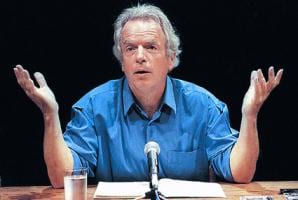 Sylvia Plath was an excellent poet but is known to many for this largely autobiographical novel which was first published in 1963 under the pseudonym Victoria Lucas. The Bell Jar has become a classic of American literature.
Sylvia Plath was an excellent poet but is known to many for this largely autobiographical novel which was first published in 1963 under the pseudonym Victoria Lucas. The Bell Jar has become a classic of American literature.
The book is based on her own experience yet one has to be careful not to confuse this novel with an autobiography, it has been written with a certain audience and effect in mind, 10 years after the actual events.
Content.
Esther, an A-student from Boston who has won a guest editorship on a national magazine, finds a bewildering new world at her feet. Her New York life is crowded with possibilities, so that the choice of future is overwhelming, but she can no longer retreat into the safety of her past. Deciding she wants to be a writer above all else, Esther is also struggling with the perennial problems of morality, behaviour and identity. In this compelling autobiographical novel, a milestone in contemporary literature, Sylvia Plath chronicles her teenage years – her disappointments, anger, depression and eventual breakdown and treatment , with stunning wit and devastating honesty.
.After reading the bell jar, I found that it shows the vulnerability of people and how we struggle to manoeuvre through life. I t seemed to have a very dark underlying tone to it, in regards to what will happen to a woman’s aspirations in a society that refuses to take them seriously. I could feel the despair and frustration of Esther, as she questions the world around her and how her search for identity becomes a terrifying descent toward madness. I believe that almost everyone can or could relate to this book as we all have wants and dreams, but sometimes we don’t always achieve them. Consequently, it highlights how we are all just one slip away from the edge.
.In conclusion the Bell Jar has provided me with a stimulus for my own performance and it has given me an insight into just how unhappy Plath was with her life.
